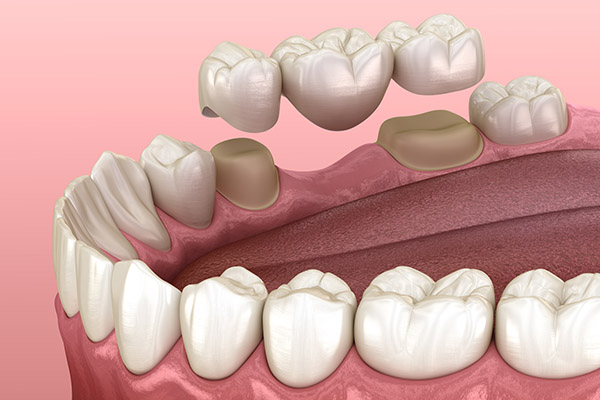Missing teeth can cause problems for your confidence and your health. Whether you lost your tooth due to gum disease or a mishap while paddleboarding on the Bosque River, it’s important to consult a local Waco dentist to discuss options for replacing a missing tooth as soon as possible. While dental implants and dentures are two alternatives to consider, a dental bridge may be the right choice if you have healthy surrounding teeth and want a less invasive procedure that requires only a few dental visits.
What is the purpose of a dental bridge?
A dental bridge literally bridges the gap between teeth if one or more natural teeth are missing. Bridges can help keep other teeth from shifting, improve oral health, increase confidence in your smile, support chewing, and restore your bite.
Here are the four most common types of dental bridges and when you might choose each option.
Traditional dental bridge
A traditional bridge is a fixed solution where one or more artificial teeth, called pontics, are secured by two or more crowns. The crowns are attached to your existing teeth, and the pontic fills the gap between them. Your dentist may consider a traditional dental bridge when you have healthy abutment teeth (the teeth the bridge adheres to) on both sides of the gap. Traditional bridges can last for 10 to 15 years with proper care, making them one of the longest-lasting dental bridge solutions.
Cantilever bridge
Unlike a traditional bridge, a cantilever bridge is only fastened by a crown on one side. Cantilever bridges can be useful if you only have one abutment tooth or one of your abutment teeth is not healthy enough to support a bridge. Since a cantilever bridge is only adhered on one side, it’s not as strong as a traditional bridge and may only last five to seven years.
Maryland dental bridge
A Maryland dental bridge often replaces missing teeth in the front of the mouth. With this option, a replacement tooth is bound to the back of existing teeth using metal, porcelain, or ceramic wings. Due to the way the Maryland bridge is bound to supporting teeth, it’s not as strong and is often not the preferred option to replace teeth that bear the burden of heavy chewing.
Implant-supported bridge
Unlike other bridges that anchor the replacement tooth to existing, natural teeth, an implant-supported bridge does not require the support of surrounding teeth. It uses titanium fixtures that are surgically implanted into the jawbone. Due to the invasiveness of the procedure, these bridges tend to be the most long-lasting option and can be an excellent choice when multiple teeth in a row are missing. However, keep in mind that since the implants need to heal, the process to get an implant-supported bridge could take months.
The bottom line
Dental bridges are an often less invasive treatment for missing teeth that can help restore your smile. Depending on how many teeth you’re missing and the health of surrounding teeth, your dentist may recommend a traditional, cantilever, Maryland, or implant-supported bridge. As you review options for bridges with your dental professional, be sure to ask about procedures that fit your budget and aesthetic preferences.

